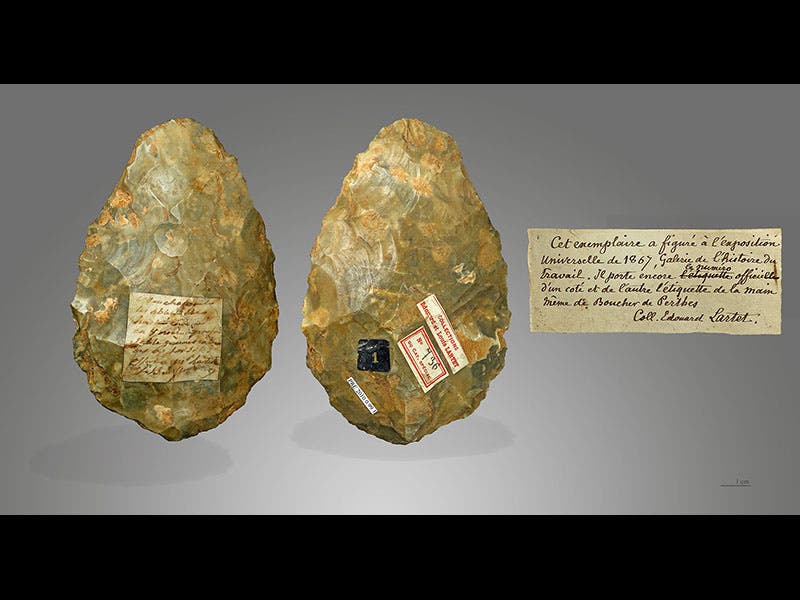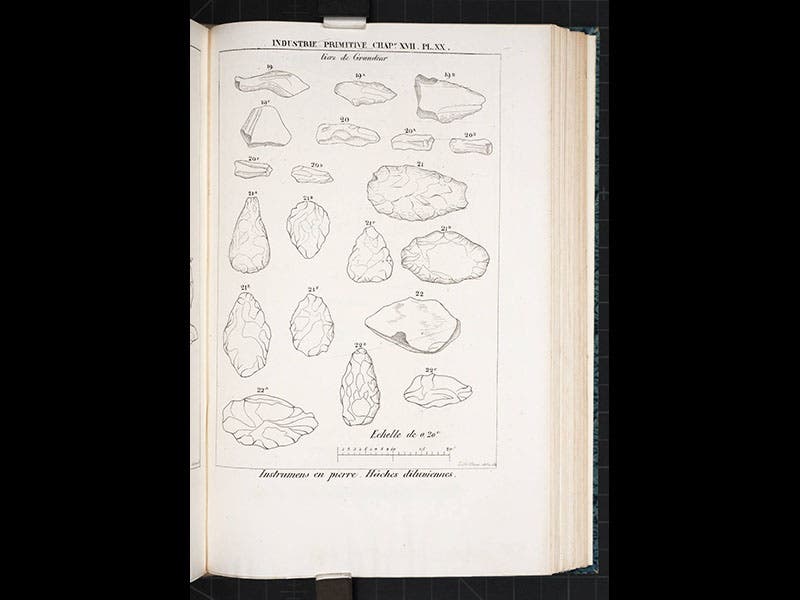Scientist of the Day - Jacques Boucher de Perthes

Jacques Boucher de Crèvecoeur de Perthes, a French customs official and amateur antiquarian, died Aug. 5, 1868, at the age of 79 (fourth image). Boucher de Perthes lived in Abbeville, in northwestern France, and in the 1830s he began collecting flaked flint objects that looked to him like stone tools. Most were about the size of one’s hand and seemed to be axes that might have been held in the palm. Convinced that these hand-axes were human artifacts, made by prehistoric peoples before metal-working was discovered, he made the argument for human antiquity in the first volume of his Antiquités celtiques et antédiluviennes (Celtic and Antediluvian Antiquities), published in 1847 (second and third images).
Boucher de Perthes made few converts at the time, primarily because he found no other evidence of human presence along with his supposed tools, nor any remains of the animals those tool-makers must have hunted. It was not until the discovery of Brixham Cave in England in 1858, with its mixture of stone tools and extinct animal remains, that naturalists began to take seriously the notion that humans were ancient inhabitants of this planet. Subsequently, several geologists—including the eminent Charles Lyell—revisited Abbeville and came to realize that Boucher de Perthes had been right all along. A somewhat embittered Boucher de Perthes—he was still very much alive—was only too happy to agree. His book eventually stretched to 3 volumes, completed in 1864; we have the entire work in our collections, and we displayed one volume in our 2012 exhibition, Blade and Bone: The Discovery of Human Antiquity.
Wikipedia has a photo of an actual tool collected by Boucher de Perthes, which then passed into the collection of the noted archaeologist Edouard Lartet (first image). The caption does not tell us where the tool now resides; it might be in the Museum Boucher de Perthes in Abbeville, or possibly in the Musée de l'Homme in Paris. But it is a lovely artifact, with the original identifying labels of both Boucher de Perthes and Lartet still firmly attached.
Dr. William B. Ashworth, Jr., Consultant for the History of Science, Linda Hall Library and Associate Professor, Department of History, University of Missouri-Kansas City. Comments or corrections are welcome; please direct to ashworthw@umkc.edu.









